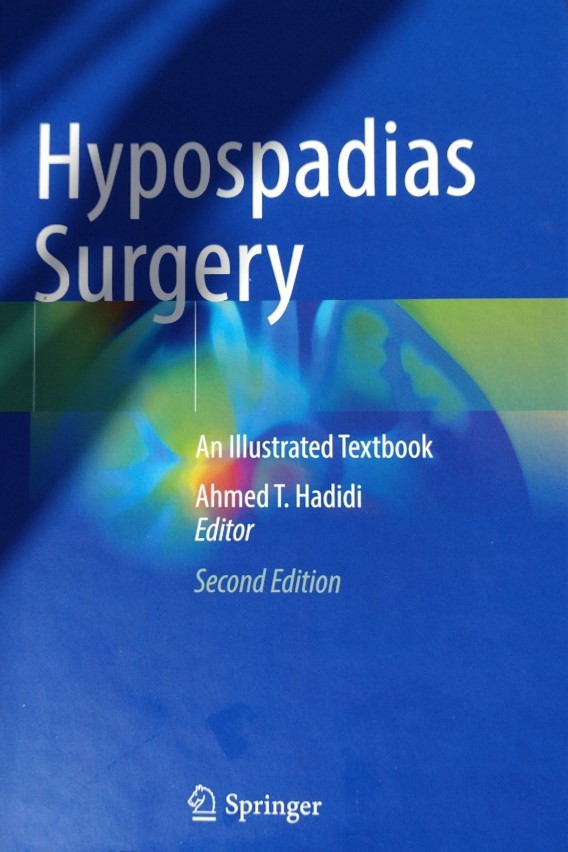Book Review: Hypospadias Surgery 2nd edition
Springer, published 2022
Amazon Price £110 (Hardcover)
e-book (£87.00)
The 2nd edition of this book, with apologies to the Great British Bake-off, could best be described as a…… “showstopper”! No other word for it. Every nook and cranny, every cul-de-sac and sideshow, every detail and theme is explored, turned over, cogitated on and commented upon.
Prof. Ahmed Hadidi has been a familiar figure around European conferences for some time now, always pushing this single-issue – hypospadias. He is a director of a clinic dedicated to hypospadias in Frankfurt, Germany and has organised many workshops and conferences over the years. Once, taking the whole kit and caboodle to the Kremlin and the banks of the Moscow river, as I remember. This has allowed him to cultivate a network of like-minded individuals and a deeply held passion for the subject.
The book structure is in four parts: basic science; operations; complications and a miscellany of articles taking into account tissue engineering (yes, really, though it seems to date from a study in the year 2000), writing a paper on hypospadias even. There are just short of 1000 pages split into 70 chapters of which about 40% have been written by the editor himself. The early pages are decorated with some pithy sentiments (“Everybody is against specialisation except the patient.” Francis More (1913-2001)) from the great and the good – he is a well-travelled man after all. Then we have chapters on embryology and some basic sciences including endocrinology. However, aside from a couple of chapters on genetics and epidemiology written by scientists from Nijmegan, Netherlands, again this was all taken on by Hadidi himself. The operation and complication chapters are similarly a mixture of invited experts, some recycled from the 1st edition, and again Hadidi himself.
There are some criticisms of course, evident having read a few of the chapters in detail. The obvious one is that duplication is everywhere, it has to be given the singularity of the subject matter. Each operative chapter ends with a picture taken when all the oedema, bleeding etc. has settled looking perfect! The other is a bit more subtle. No one can deny the breadth of the subject matter – there are 37 chapters on individual operations here but, try as I might I could not immediately find one with Warren Snodgrass describing what is perhaps the commonest operation for hypospadias throughout the world – tubularizing an incised urethral plate. It is there; Mark Rich, an American hypospadiologist writes on this and lays claim to the idea and technique himself during the late 1980s at Children’s Hospital of Philadelphia using a Mathieu reconstruction before Snodgrass took it over in the 1990s with a Duplay kind of reconstruction, and the rest is history. There is a similar situation with Alvar Bracka’s staged full-thickness grafts for proximal hypospadias technique – probably the most common alternative for this scenario in the UK. Hadidi does a good job in chapter 40 describing it with most results taken from Bracka’s published results, but it is a bit of a facsimile.
The schematic illustrations are really first class, and there are a lot, all done by the editor. These are essential to understanding some of the minutiae on display here. Operative photographs are plentiful but of variable quality and of course there is much duplication.
With so many operations and variations on offer how is the reader to decide the best for their patient? That is a difficulty that is essentially unresolved. There is no real synthesis or indeed any kind of objective framework imposed to judge, though one of the chapters (#56) does try and update the changes apparent in this world over the past 20 years. But, for some of its conclusions I had to raise more than one eyebrow. Does anyone seriously believe that “chromic catgut is favored for the skin”, or suggest that “PDS may react with urine and has not been advised for hypospadias surgery”?
In short, this is a life’s work, a magnum opus, a showstopper and great credit should go to the Hadidi for orchestrating this and sharing the results with the world.
Comments, as usual, are welcome.
Prof Mark Davenport ChM FRCS(Paeds)
